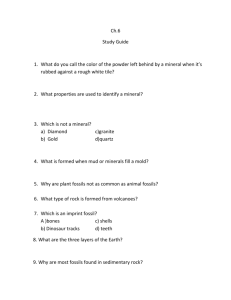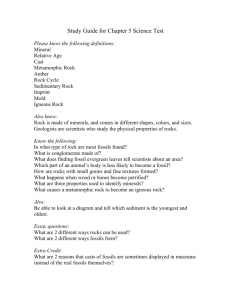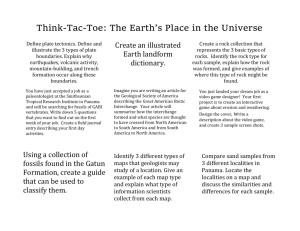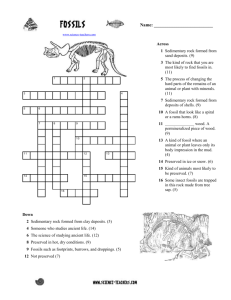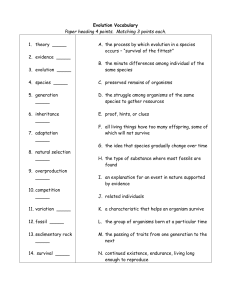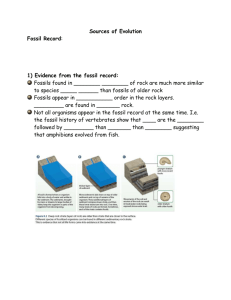Science Weekly Assignments
advertisement
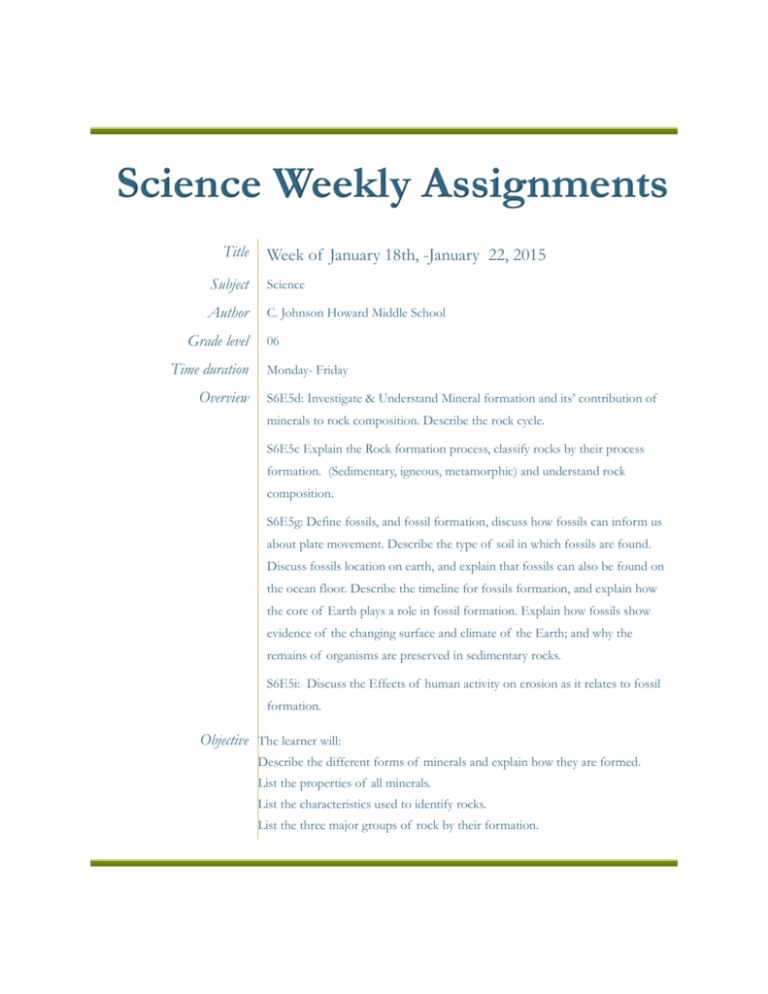
Science Weekly Assignments Title Week of January 18th, -January 22, 2015 Subject Science Author C. Johnson Howard Middle School Grade level Time duration Overview 06 Monday- Friday S6E5d: Investigate & Understand Mineral formation and its’ contribution of minerals to rock composition. Describe the rock cycle. S6E5c Explain the Rock formation process, classify rocks by their process formation. (Sedimentary, igneous, metamorphic) and understand rock composition. S6E5g: Define fossils, and fossil formation, discuss how fossils can inform us about plate movement. Describe the type of soil in which fossils are found. Discuss fossils location on earth, and explain that fossils can also be found on the ocean floor. Describe the timeline for fossils formation, and explain how the core of Earth plays a role in fossil formation. Explain how fossils show evidence of the changing surface and climate of the Earth; and why the remains of organisms are preserved in sedimentary rocks. S6E5i: Discuss the Effects of human activity on erosion as it relates to fossil formation. Objective The learner will: Describe the different forms of minerals and explain how they are formed. List the properties of all minerals. List the characteristics used to identify rocks. List the three major groups of rock by their formation. Explain the characteristics of igneous, sedimentary and metamorphic rock and how people use them. Describe the rock cycle. Define fossils, and explain how fossils contribution rocks’ formation. Describe and explain geological time line for rock and fossil formation. Explain fossils’ contribution to earth’s changing surface and climate. Explain human’s effects on fossil formation Materials Activities and procedures Power point notes presentations, you tube videos, various worksheets and handouts designed to engage and inform students of the material necessary to ensure that they master the required standard. This week students were required to complete the following activities Phase 2: Delivered Curriculum Monday: MLK holiday No school Tuesday Maintenance Bell work Questions use the diagram to answer the questions 1. Which part of the geosphere is entirely liquid? a.)A c.) C The outer core is liquid. b.)B d.)D 2. 3. What provides the energy that keeps the water cycle moving? Explain (the sun) At which location would earthquakes be least likely to occur? 2 A.) 1 (This is the answer as there is no plate movement at this site) B. ) 2 C.) 3 D. ) 4 Wednesday: Maintenance Bell work Limestone chips dissolve after they are placed in a beaker of dilute acid. 1. Which geologic process is this most similar to? a.) Faulting b.) Folding c.) Chemical Weathering (this is the answer) d.) Subduction 2. How do scientists identify minerals? List at least 5 tests they must perform. Thursday Bell work 1. What are minerals & why is color not always a reliable way of identifying mineral? (Factors such as weathering and Inclusion or impurities can affect the mineral’s color.) 2. What property do minerals that glow under ultraviolet light display? (florescence) Friday: Bell work 1.The rock shown is composed primarily of large crystals that were formed by — 3 A.) cooling magma (this is the answer) B.) compacting shells C.) weathering D.) faulting 2. When granite is subjected to high enough amounts of heat and pressure to change it but not melt it, granite changes into — A.) a metamorphic rock (this is the answer) B.) a sedimentary rock C.) sediments D an igneous rock Mini lesson Monday- MLK Holiday No School. Tuesday: Target Your Reading anticipation guide (pg62b Glencoe Georgia science textbook) Max teaching Wednesday. Brain pop mineral’s movie Next: Display or show photographs of a piece of pencil lead (graphite) and a diamond. Explain that both substances are composed of carbon. Ask students to brainstorm about how two substances with such different properties can from from atoms of the same element. Thursday- Have students work in small groups to determine a classification system for minerals based on observable physical properties. Give groups a number of minerals or photographs of a variety of minerals to classify. After students have created the classification system give them new sample to add to their system. (textbook page 64) Friday- Target your reading anticipation guide (page 90B Glencoe Georgia science textbook, or Mr. Pharr’s YouTube rock cycle song videos. Work Session Monday: MLK Holiday no school Tuesday: TW provide/ students will take power point “Mineral” notes. Next student will use the earth science textbook to complete a guided reading worksheet “Chapter 3 & 4-Rocks and Minerals Earth Science Textbook” Wednesday: Using academic games such as Kahootit, or Jeopardy (teacher’s preference) Teacher/ students will review concepts of earthquake/volcanoes in preparation for upcoming test. Then students will finalize the rock and mineral worksheet. Thursdays: Earthquake and volcano quiz or test. Then students will take Rock cycle notes from teacher provided power point presentation. Next students 4 will began the assignment “Journey on the Rock Cycle”. In this assignment students will write about their experiences as a rock during a journey on the rock cycle. S/W will need to describe their adventures at each spot on the journey and describe the kind of rock that they had become. Finally S/W be challenge to Create a comic strip story of their experiences from their journey through the rock cycle! Note this assignment was moved to week 1-25) Friday: finalize any unfinished notes then continue work on the Journey on the rock cycle activity. If time permits have students work in groups to complete the critical thinking work sheet “Rock Solid” students should be able to cite evidence from the text to support their answers. (paired reading max teaching strategy) Conclusions Please encourage students to study science notes each night. Up coming Students should continue to work on The “Our Dynamic Earth Project In which students create a board game based on the topic covered within this unit is due January 27, 2016. No other homework has been assigned. 5
